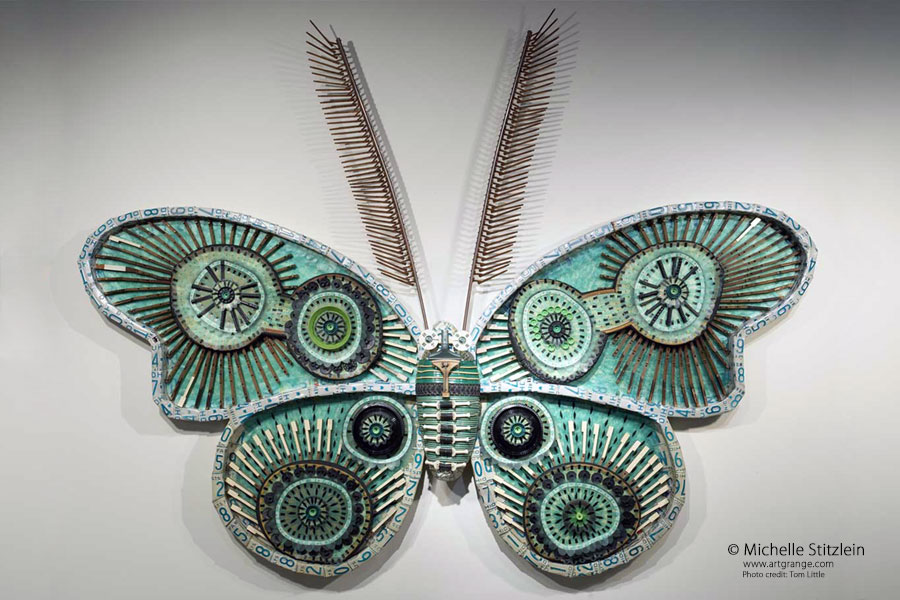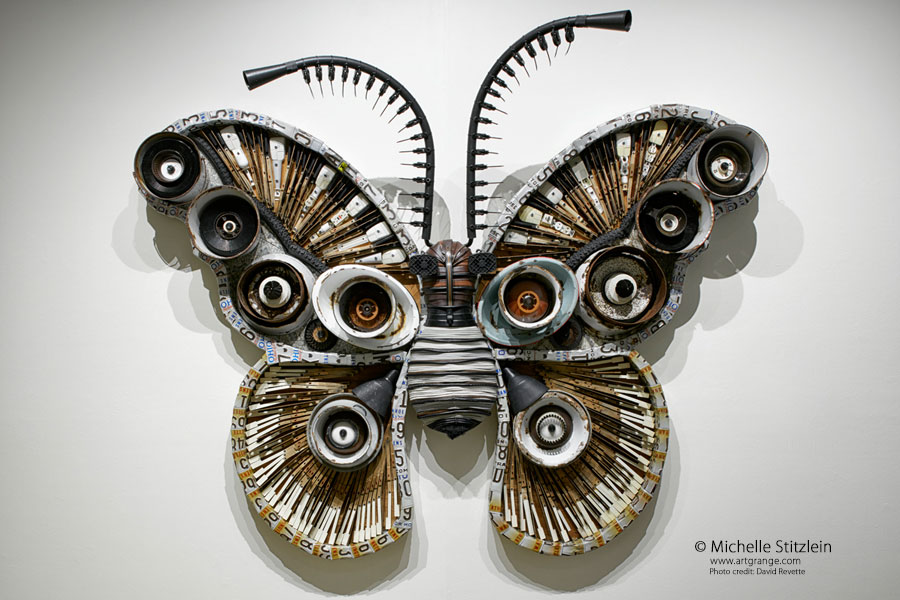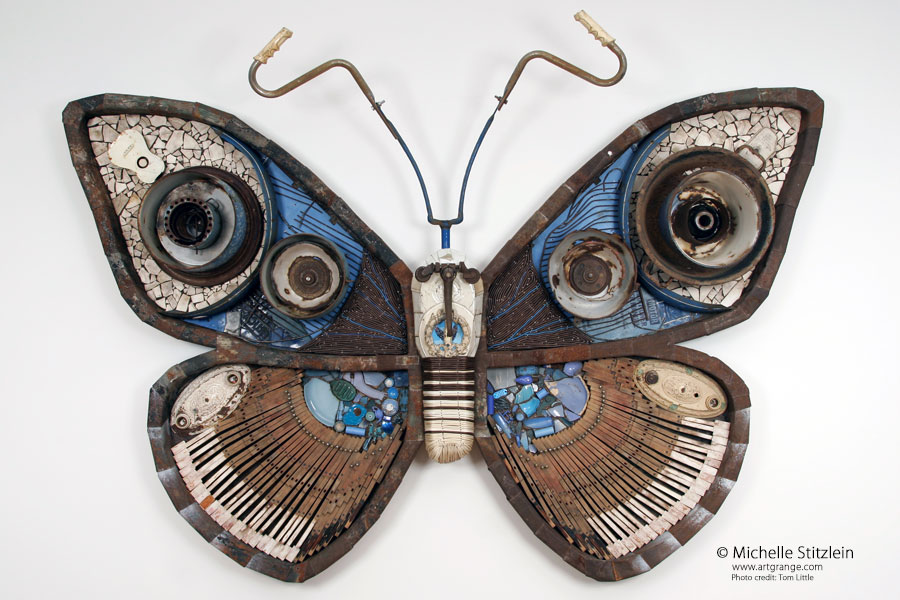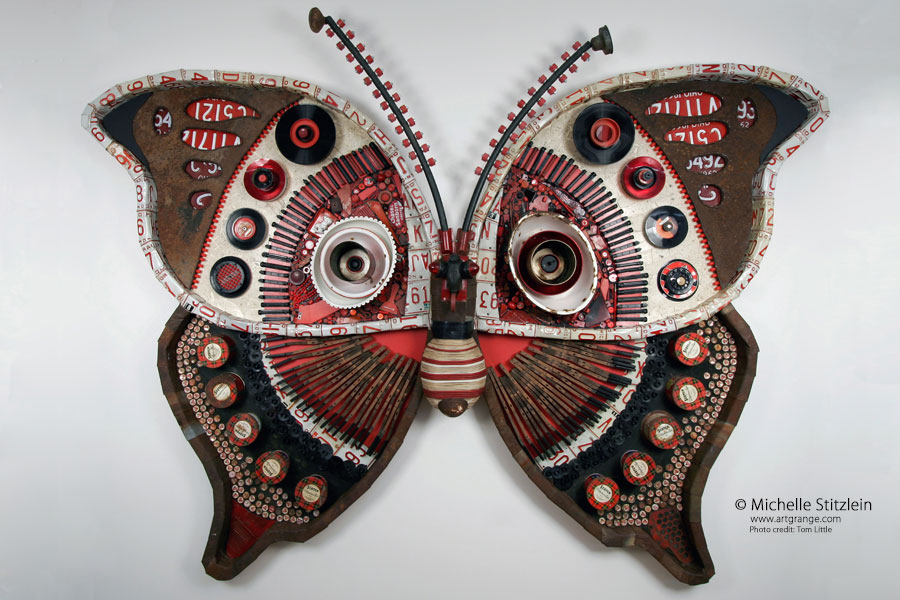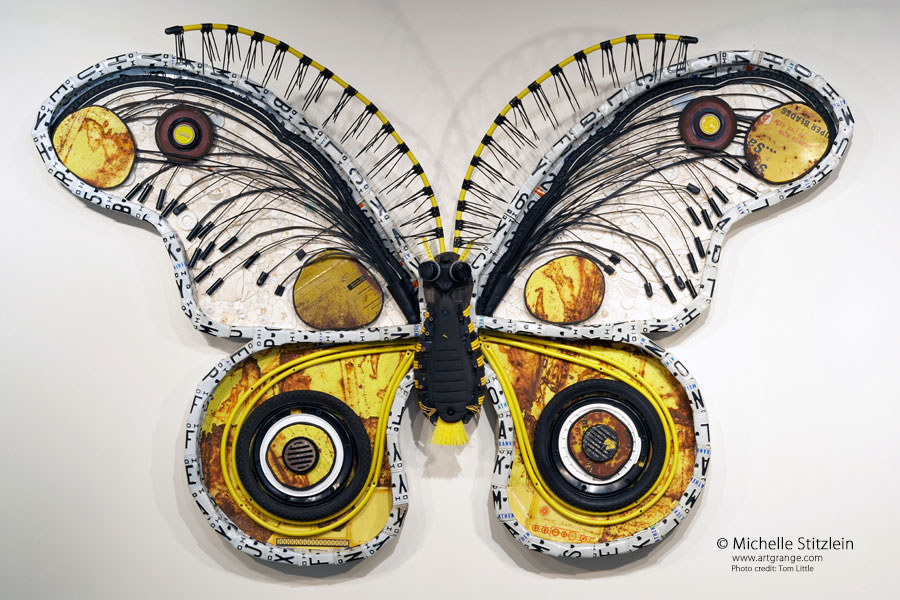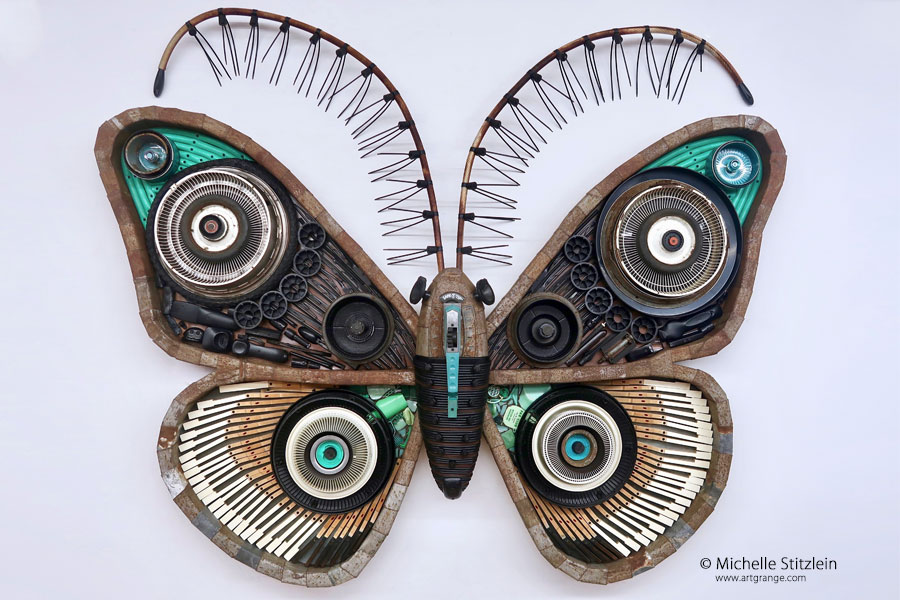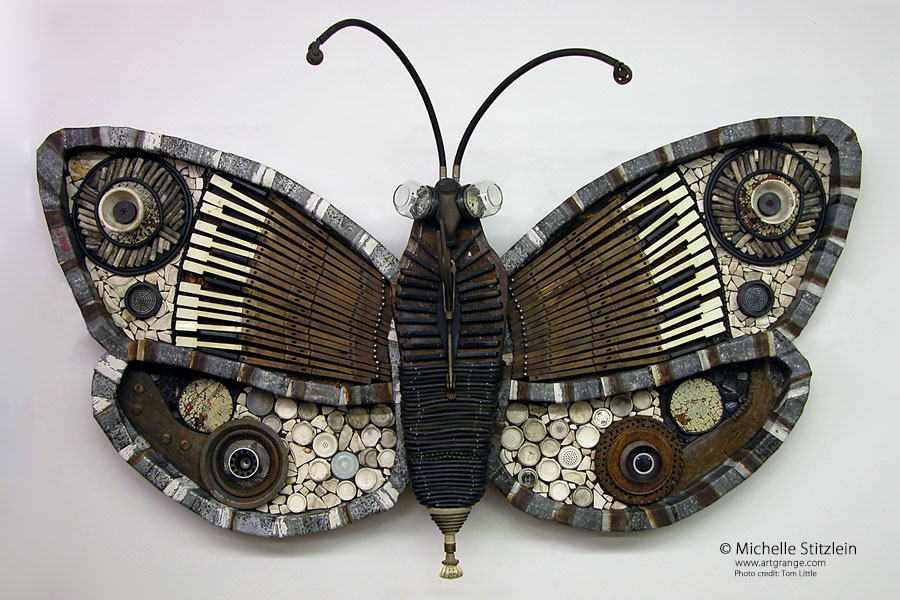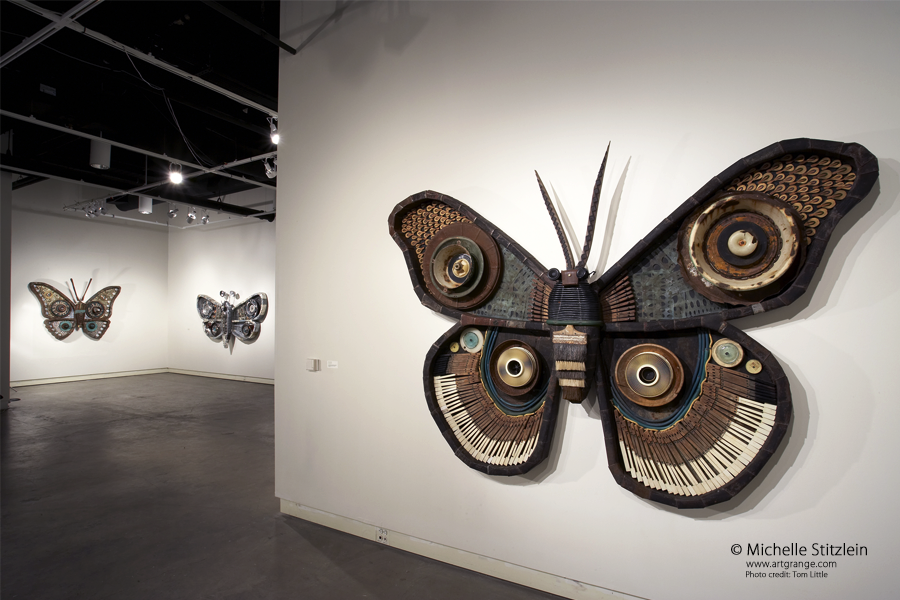Moth series
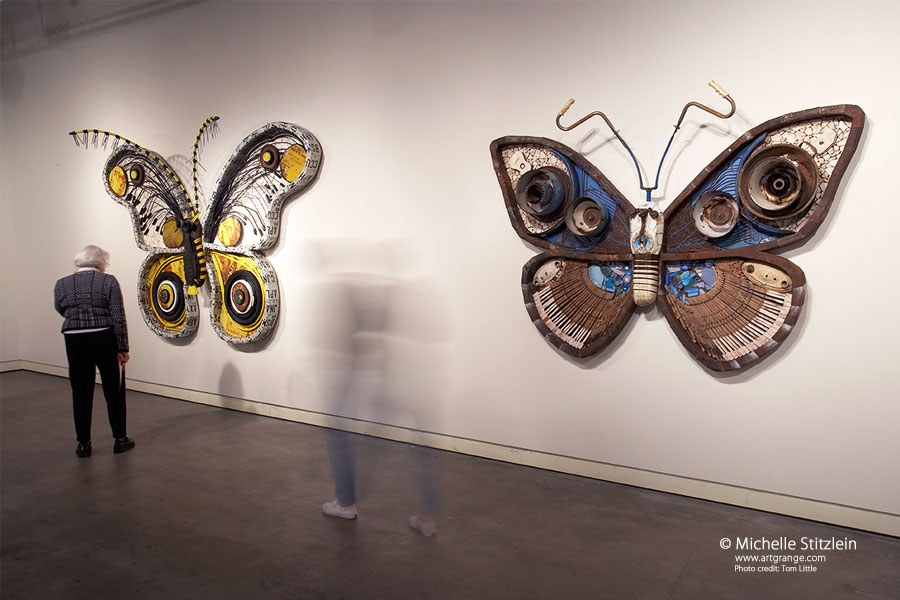
Combining an artistic boldness with the premise that recycled materials have the capacity to metamorphose into larger objects of great beauty, Stitzlein’s series of more than 14 wall hung sculptures moths range in size from 3 to 11 feet.
She began working on this series in 2003, inspired by “myriad varieties of beautiful, exotic moths in my own backyard.”
My work is influenced by motifs found in nature, though it does not necessarily resemble any one species of plant, animal or insect… Each piece in the Moth series combines patterns and borrows attributes from many butterflies and beetles, but it is also a study in the symmetrical being a bit asymmetrical. No two wings are identical. I’ve admired the beautiful imperfections found in nature’s details and, in turn, exposed those “flaws” by enlarging everything by hundreds of times its original size.
The contradiction of ideas surrounding artwork inspired by nature, but created entirely with discarded materials left over from mass consumerism and industrial production, is intriguing to me. It’s something of a full circle story. Raw resources are extracted and harvested from the earth to manufacture solid goods and household wares and then those same items are disposed of by the community and scavenged by myself to create a vague essence of nature. I find the concept simultaneously disturbing and comforting. At once, an insult and a tribute to Mother Nature.
Her butterflies are so striking that you hardly notice the bits and pieces of their make-up, like:
- old piano keys
- tin cans
- license plates
- bicycle tires
- light sockets
- brushes
- bike handles
- broken porcelain
- architectural drawing tools
- buttons
- patinaed metal
- old metal bowls
- …. the list goes on and on.
Michelle Stitzlein, USA

PROFILE
Michelle’s art work is created with recycled materials and found objects. Items such as old garden hoses, electrical wire, computer cables, piano keys, mini blinds, china shards, license plates, and bottle caps are utilized to create imagery and abstractions born in her imagination. However, only purposeful study will reveal the individual identities of the hundreds of objects within each of her pieces. These objects, once assigned and confined to a certain function or task, find a new decorative incarnation within her work as color, texture and/or pattern. Through the process of cutting, dismantling and placement, she coaxes the multiple, disparate objects into unusual relationships and odd bedfellows to unite as a bold, visual whole.

